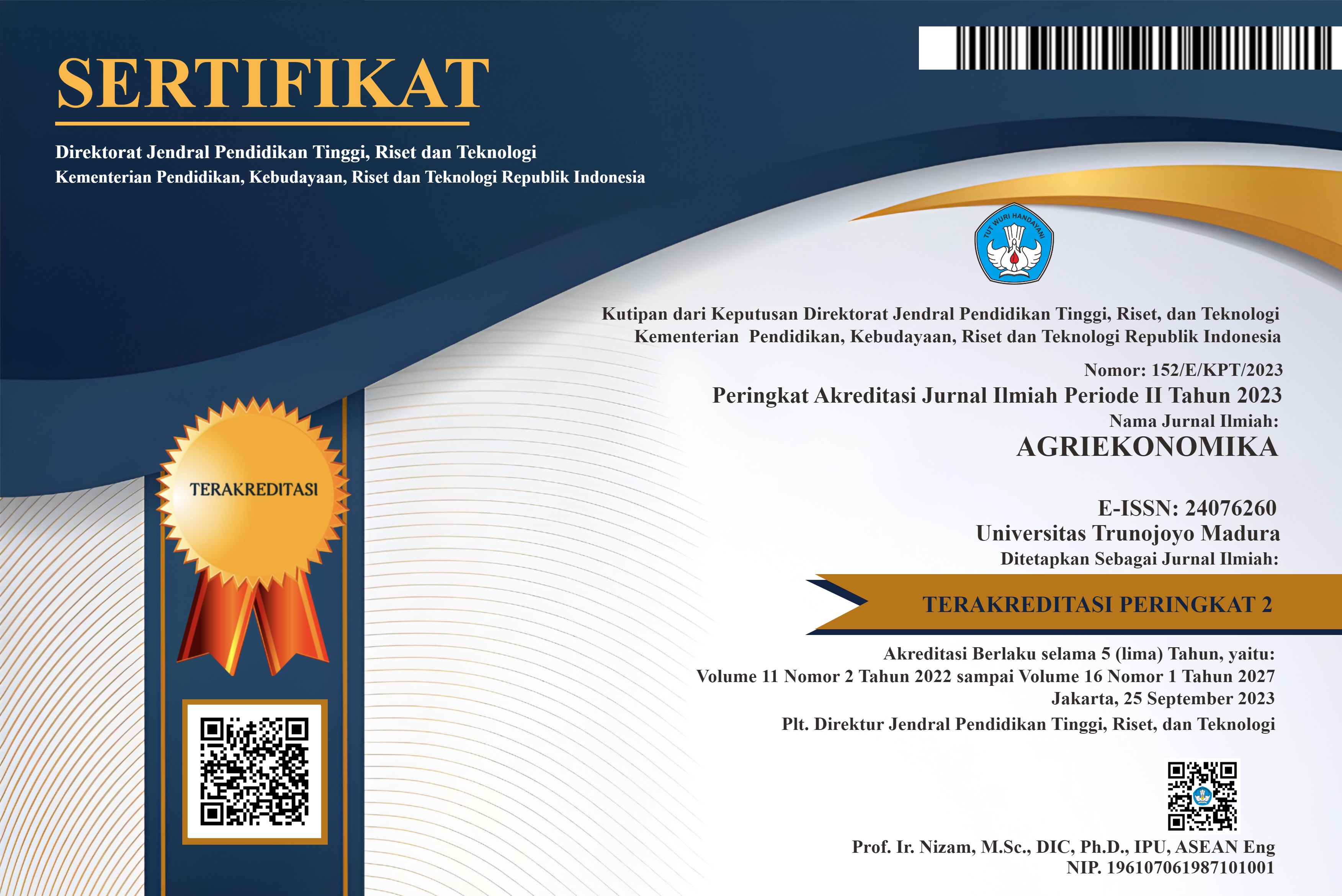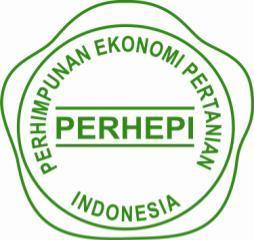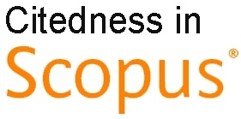A Study on Affecting Factors of White-Nest Swiftlet (Collocalia fuciphaga) Farming Performance in Haurgeulis District, Indramayu Regency
Abstract
Keywords
Full Text:
PDFReferences
Alma, B. (2009). Kewirausahaan. Bandung: Alfabeta.
Bian, Y., & Ang, S. (1997). Guanxi Networks and Job Mobility in China and Singapore. Social Forces, 75(3), 981-1005. Retrieved from https://www.re searchgate.net/publication/275326275_Guanxi_Networks_and_Job_Mobili ty_in_China_and_Singapore.
Cai, S., & Yang, Z. (2014). The Role of the Guanxi Institution in Skill Acquisition between Firms: a Study of Chinese Firms. Journal of Supply Chain Manage ment, 50(4), 3-23. Retrieved from https://www.onlinelibrary.wiley.com/ doi/abs/10.1111/jscm.12035.
Chen, Y., Friedman, R., Enhai, Y., & Sun, F. (2011). Examining the Positive and Negative Effects of Guanxi Practices: a Multi-Level Analysis of Guanxi Practices and Procedural Justice Perceptions. Asia Pacific Journal of Mana gement, 28, 715-735. Retrieved from https://www.researchgate.net/publi cation/226715335_Examining_the_positive_and_negative_effects_of_guanxi_practices_A_multi-level_analysis_of_guanxi_practices_and_procedural_ justice_perceptions.
Cheng, Q., & Tang, W. (2012). How Business Guanxi Affects a Firm’s Performance: a Study on Chinese Small and Medium-Sized Construction Companies. Undergraduate dissertation, Uppsala University, Uppsala.
Crawford, D. (2001). Globalisation and Guanxi: the Ethos of Hong Kong Finance. New Political Economy, 6(1), 45-65. Retrieved from http://unpan1.un.org/ intradoc/groups/public/documents/APCI TY/UNPAN011393.pdf.
Dar, K.B. (2015). The Prohibition of China (Guangxi), Vietnam Border Trade During The Tay Son Rebellion: Rhetoric in Political Gain. Malaysian Journal of History, Politics and Strategic Studies, 42(2), 23-52. Retrieved from http://journalarticle.ukm.my/10042/1/13781-37750-1-SM.pdf
Djaali, H. (2007). Psikologi Pendidikan. Jakarta: Bumi Aksara.
Dunning, J.H., & Kim, C. (2007). The Cultural Roots of Guanxi: an Exploratory Study. The World Economy, 329-341. Retrieved from https://www.research gate.net/publication/4921261_The_Cultural_Roots_of_Guanxi_An_Explora tory_study/amp.
Endraswara, S. (2013). Falsafah Kepemimpinan Jawa. Yogyakarta: Narasi.
Fan, Y. (2002). Guanxi’s Consequence: Personal Gains at Social Cost. Journal of Business Ethics, 38(4), 371-380. Retrieved from https://www.researchgate. net/publication/225324186_ganxi%27s_Consequences_Personal_Gains_at_Social_Cost.
Fletcher, C. (1993). Appraisal: Routes to Improved Performance. London: Institute of Personnel and Development.
Gaspersz, V. (2014). Total Quality Management (TQM). Jakarta: Gramedia Pustaka Utama.
Gellerstam, M., & Wiesner, J. (2010). The Impact of Guanxi in Chinese Business, a Study of Swedish SMEs in Beijing. Undergraduate dissertation, University of Gothenburg, Gothenburg.
Ghozali, I. (2013). Model Persamaan Struktural, Konsep dan Aplikasi dengan Program AMOS. Semarang: UNDIP Press.
Guan, B. (2011a). Guanxi-based Strategy and Competitive Advantage: an Exploratory Study. Undergraduate dissertation, University of Manchester, Manchester.
Guan, J. (2011b). Guanxi: the Key to Achieving Success in China. Sino-Platonic Papers, 217, 3-14. Retrieved From Http://Sino-Platonic.Org/Complete/Spp 217_Guanxi.Pdf.
Hakim, A. (2011). Karakteristik Lingkungan Rumah dan Produksi Sarang Burung Walet (C, fuciphaga) di Kecamatan Haurgeulis, Kabupaten Indramayu, Jawa Barat. Bachelor thesis, Institut Pertanian Bogor, Bogor.
Hamzah, Z., Ibrahim, N.H., Sarijini, Hussin, K., Hashim, O., & Lee, B.B. (2013). Nutritional Properties of Edible Bird-nest. Journal of Asian Scientific Research, 3(6), 600-607. Retrieved from http://www.aessweb.com/pdf-files/jasr-3(6)-600-607.pdf.
Heryanto I., & Triwibowo, T. (2018). Path Analysis Menggunakan SPSS dan Excel. Bandung: Informatika.
Hoon, S.H. (2012). Memenangkan Persaingan Cara Cheng Ho. Jakarta: Kompas Media Nusantara.
Huang, K.-P., & Wang, K.Y. (2011). How Guanxi Relates to Social Capital? A Psychological Perspective. Journal of Social Sciences, 7(2), 120-126. Retrieved from https://thescipub.com/pdf/10.3844/jssp.2011. 120.126.
Ikhsan, M.F., Ghani, A.B.A, & Subhan, M. (2017). The Relevancy of the Guanxi and Xinyong Concepts in Chinese Business Capitalization In Indonesia. Journal of International Studies, 13, 97-116. Retrieved from https://www. researchgate.net/publication/332328822_The_Relevancy_of_the_’Guanxi’_and_’Xinyong’_Concepts_in_Chinese_Business_Capitalization_in_Indo nesia_1.
Jannah, E.M., Rahman, A., & Yuniarti, R. (2013). Penentuan Strategi Bersaing Perusahaan Berdasarkan Pengukuran Kinerja dengan Metode Malcolm Baldrige National Quality Award (MBNQA): Studi Kasus PT. Cakra Guna Cipta Malang. Jurnal Rekayasa dan Manajemen Sistem Industri, 1(1), 11-21. Retrieved from https://www.jrmsi.studentjournal.ub.ac.id/index.php/ jmrsi/article/view/ 8/18.
Jin, A. (2006). Guanxi Networks in China: Importance and Future Trends. China and World Economy, 14(5), 105-118. Retrieved from https://www.research gate.net/publication/4753663_Guanxi_Networks_in_China_Its_Importance_and_Future_Trends.
Karsidi, R. (2001). Paradigma Baru Penyuluhan Pembangunan dalam Pemberdayaan Masyarakat. Jurnal Mediator, 2(1), 115-125. Retrieved from https://ejournal.unisba.ac.id/index.php/mediator/article/ download/711/391.
Khitam, C. (2014). Pengaruh CSR terhadap Kinerja Keuangan Perusahaan: Studi Kasus BEI Tahun 2011 – 2013. Jurnal EKBIS, 4(10), 507-511. Retrieved from https://www.journal.unisla.ac.id/pdf/121012014/4%20 Chusnul.pdf.
Koesmawardhani, N.W. (2017). Sarang Walet dan Kacang RI di Supermarket Ekspor Impor Hunan. Retrieved from https://finance.detik.com/berita-ekonomi-bisnis/d-3480193/sarang-burung-waletdan-kacang-ri-di-supermar ket-ekspor-impor-hunan.
Kurniawan, A., & Kusumawardhani, A. (2017). Pengaruh Manajemen Rantai Pasokan terhadap Kinerja UMKM Batik di Pekalongan. Diponegoro Journal of Management, 6(4), 1-11. Retrieved from https://www.ejournal.undip.ac. id/index.php/djom/article/view/17952.
Lee, E.Y.-C., & Anderson, A.R. (2007). The Role of Guanxi in Chinese Entrepreneurship. Journal of Asia Entrepreneurship and Sustainability, 3(3), 3-17. Retrieved from https://openair.rgu.ac.uk/handle/10059/301.
Lin, L.-H., & Ho, Y.-L. (2010). Guanxi and OCB: the Chinese Cases. Journal of Business Ethics, 9(6), 285-298. Retrieved from https://link.springer.com/ar ticle/10.1007/s10551-010-0465-6.
Luo, Y.D. (2007). Guanxi and Business. New Jersey: World Scientific Publishing.
Marpaung, D. (2018). KJRI Shanghai Gelar Forum Bisnis Sarang Burung Walet. Jurnal Trade Expo Indonesia, 2, 3. Retrieved from https://www.tradeexpo indonesia.com/jurnal/indone sia/2/jurnal_hari_2_mei2018.pdf.
McClelland, D.C., Athkinson, J.W., Clark, R.A., & Lowel, E.L. (1953). The Achievement Motive. New York: Appeton Century Cofts.
Millaty, R. (2017). Faktor Teknis Budidaya yang Mempengaruhi Produktivitas Tanaman Kakao (Theobroma Cacao L.) di Kecamatan Kumpeh, Kabupaten Muaro Jambi. Jurnal Penelitian Universitas Jambi Seri Sains, 1-16. Retrieved from http://repository.unja.ac.id/1182/1/D1A013056-ARTIKEL.pdf
Mulyani. (2016). Model Kepemimpinan Etnis Tionghoa di Jawa Barat: Survei pada Perhimpunan Fuqing di Jawa Barat. Jurnal Manajemen, 20(3), 453-473. Retrieved from https://www.researchgate.net/publication/322003746_ MODEL_KEPEMIMPINAN_ETNIS_TIONGHOA_DI_JAWA_BARAT_SUR VEI_PADA_PERHIMPUNAN_FUQING_DI_JAWA_BARAT.
Pranarka, A.M.W., & Vidhandika, M. (1996). Pemberdayaan: Konsep, Kebijakan, dan Implementasi. Jakarta: CSIS.
Pujihastuti, I. (2010). Prinsip Penulisan Kuesioner Penelitian. Jurnal Agribisnis dan Pengembangan Wilayah, 2(1), 43-56. Retrieved from https://www.jurnal. unismabekasi.ac.id/index.php/cefars/article/view/63.
Rachman, D. (2016). Meraup Untung dari Sarang Walet. Maybank Premier Wealth, 1, 16-17. Retrieved from https://www.maybank.co.id/consumers/ wealth-management/premier-wealth/documents/pdf/Premier-Wealth-Edisi-I-2016.
Rangkuti. (1999). Analisis SWOT: Teknik Membedah Kasus Bisnis. Jakarta: Gramedia Pustaka.
Rani, A.E., Baihaqi, I., & Bramanti, G.W. (2017). Analisis Pengaruh Atribut Kemitraan terhadap Kolaborasi dan Kinerja pada Indusri Foodservice di Surabaya. Jurnal Sains dan Seni ITS, 6(2), 265-268. Retrieved from https://ejurnal.its.ac.id/index/php/sains_seni/article/download/25721/4641.
Riduwan, A., & Kuncoro, E.A. (2008). Cara Menggunakan dan Memaknai Analisa Jalur. Bandung: Alfabeta.
Rivai, V., & Sagala, E.J. (2009). Manajemen Sumberdaya Manusia untuk Perusahaan, dari Teori ke Praktek. Jakarta: Rajagrafindo Persada.
Sarwono, J. (2007). Analisa Jalur untuk Riset Bisnis dengan SPSS. Yogyakarta: Andi.
Sparx. (2004). The Business Process Model in UML Tutorials. Australia: Sparx Systems.
Sugiyono. (2010). Metode Penelitian Kuantitatif Kualitatif dan R&D. Bandung: Alfabeta.
Suliyanto. (2010). Studi Kelayakan Bisnis: Pendekatan Praktis. Yogyakarta: Andi.
Suprapta, M., Sintasih, D.K., & Riana, I.G. (2015). Pengaruh kepemimpinan terhadap kepuasan kerja dan kinerja karyawan: studi pada Wake-Bali Art Market, Kuta Bali. E-Jurnal Ekonomi dan Bisnis Universitas Udayana, 4(6), 430-442. Retrieved from https://ojs.unud.ac.id/index.php/EEB/article/view/ 9860.
Susilo, K.K. (2017). Kegagalan Internasionalisasi MNC di suatu Negara: Studi Kasus Kegagalan Internasionalisasi Uber di Tiongkok. Jurnal Analisis Hubungan Internasional, 7(1), 120-130. Retrieved from http://journal.unair. ac.id/download-fullpapers-jahi7bdc984f19full.pdf.
Sutikno, A.S.P.M., & Wurjaningrum, F. (2014). Analisa Pengaruh Penerapan Manajemen Kualitas dengan MBNQA Kriteria terhadap Kinerja Bisnis pada Rumah Sakit Islam Jemursari Surabaya. Jurnal Manajemen Teori dan Terapan, 8(1), 34-48. Retrieved from https://e-journal.unair.ac.id/JMTT/ article/view/ 2716.
Suyamti. (2009). Hubungan antara Kualitas Kepemimpinan Kepala Sekolah Dan Motivasi Kerja Guru dengan Kinerja Guru di SMA Negeri Surakarta. Undergraduate dissertation, Universitas Sebelas Maret, Surakarta.
Trade Ministry of Indonesia. (2013). Laporan Kinerja Menteri Perdagangan RI Tahun 2012. Retrieved From Http://www.kemendag.go.id/files/ pdf/2013/05/ 07/lapkin-2012-id0-1367919327. pdf.
Trade Ministry. (2016). Laporan Market Brief: Sarang Burung Walet (HS-0410) di pasar Hongkong, RRT. Retrieved from http://djpen.kemendag.go.id/mem bership/data/files/7664a-sarang-burung-walet_opt.pdf.
Utama, M.S. (2016). Aplikasi Analisis Kuantitatif untuk Ekonomi dan Bisnis. Denpasar: Universitas Udayana.
Utami, P., & Setyorini, R. (2014). Analisa Pengaruh Enam Kriteria Lainnya dalam Malcolm Baldrige Criteria for Performance Excellence (MBCFPE) terhadap Kepemimpinan pada PT. Krakatau Steel (Persero), Tbk. E-Proceeding of Management, 1(3), 515-523. Retrieved from https://www.onereasearch.id/ Record/IOS2750.14.04.993.
Utomo, J., Nanere, M., & Sutono. (2017). The Effect Achievement Motivation, Leadership Character and Internal Culture Towards Employee’s Performance a Case Corporate from Indonesia. Journal of Applied Management, 15(1), 1-9. Retrieved from https://jurnaljam.ub.ac.id/index.php/jam/article/view/1034.
Weske, M. (2007). Business Process Management Concepts Languages. New York: Springer.
Wiegel, W., & Bamford, D. (2015). The Role of Guanxi in Buyer-Supplier Relationships in Chinese Small and Medium Sized Enterprises – a Resource-based Perspective. Production Planning & Control, 26(4), 308–327. Retrieved from http://core.ac.uk/download/pdf/19780415.pdf.
Yamane, T. (1967). Statistics: an Intruductory Analysis. New York: Harper and Row.
Zhang, J., & Pimpa, N. (2010). Embracing Guanxi. International Journal of Asian Business and Information Management, 1(1), 23-31. Retrieved from https://www.researchgate.net/publication/276000406_Embracing_Guanxi.
DOI: https://doi.org/10.21107/agriekonomika.v8i2.6210
Refbacks
- There are currently no refbacks.







